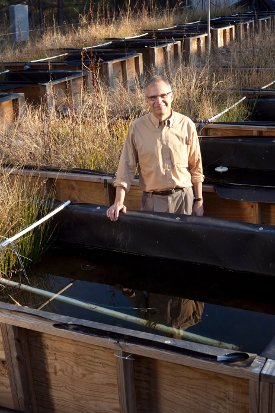I was hoping for some technical information in the Ag Tech Talk podcast (which is produced by AgriBusiness Global [AGB]) or on the interview subject’s Nano-Yield website but—no. The Ag Tech Talk host, Daniel Jacobs, provides a little information about size when discussing the nanoscale; offering a blade of grass as an example, Unfortunately, Jacobs is unable to get more technical information from Clark Bell, the company’s CEO (Chief Executive Officer) but there is ample discussion of the company’s business.
An excerpt from the transcript below the May 19, 2023 Ag tech Talk podcast should give you a sense of how the discussion went,
With fertilizer (and other input costs) rising, getting the most for your money has never been more critical. Nano-Yield offers a nanotechnology solution to deliver product at the molecular level. We talked with Clark Bell, CEO for Nano-Yield, to learn more about this technology, what innovations are on the horizon, how biologicals fit into the picture, and much more.
…
ABG [AgribBusiness Globa]: How many different countries are you in right now?
CB [Clark Bell]: We are in 10. We actually just inked a deal with Bangladesh, which we should talk about.
ABG: You wouldn’t define it as something that would cure citrus greening. You had a solution that helped that process. What else is it that your products, your solutions, offer folks?
CB: I think the claims are first and foremost fertilizers, and chemistries have some inefficiencies, and they can be corrected by different compounds by adding 4 ounces of nanoliquid technology into a spray tank, we can improve the uptake, or the absorption of different fertilizer molecules, synthetic chemistry uptake or even biologicals. And so that’s where we fit into the industry. People are trying to get more out of their tank. And so, they add nanoliquid technology to improve with uptake and better absorption to improve quality yields.
There are opportunities where people can use less material applied due to nanoliquid technology. So, in some areas like Bangladesh, for instance, where supply is a major issue — they don’t manufacture any of it domestically. It’s all brought in. So, we’re answering a problem for them or other countries that have access to. We are addressing things like corn and soybeans on broad acres in the U.S. where the grains trading, it’s very profitable that if they can get more yield and more quality, they’ll spend $5 on nanoliquid technology an acre, and they can see a minimum of a four-times return on investment by throwing that in there. So, we kind of essentially just make it so that we improve the performance of whatever they’ve already been using on their farm to get better output.
ABG: We’ve been hearing a lot about the fertilizer prices just shooting through the roof. And obviously anything that would increase yield, and not cost them an arm and a leg, or better use what they already have on their field would certainly be appreciated.
CB: Yes, certainly. We’ve been doing this for nine years, but essentially, since the pandemic. That’s really where things took off. It just takes some of the marketplace to prove your science, right? And they have a lot of data. And so that was kind of an inflection point for us. We’re up to like 800 trials now that we can showcase ROI and efficiency now.
But second to that is also the timing of the market, which is oftentimes the number one iteration of how technology is adopted is if you time the market right. And when we first came up with this concept in 2014, urea hadn’t increased by three times year over year. And so, when we go into 2021 and 2022, when those issues with MAP (Monoammonium phosphate) and DAP (Diammonium phosphate) and urea and essentially all the commodity fertilizers are just so darn expensive, we’ve been able to answer that problem for people. And again, one of one of the benefits. What we do is we can either improve the performance of what you’re already using, or in some instances there can be reductions and less material applied by using Nano-Liquid technology.
ABG: Can you give me the elevator speech version of exactly what your technology does for someone for a layman who doesn’t really, understand the technical points of the of how it works.
CB: Yeah, we were at a start of a board this last weekend. And so, I was talking to a group of tech and software people that don’t understand ag. And so, in simple terms Nano-Yield sells a sustainable fertilizer technology that improves the absorption of fertilizers and chemicals from what apply into crops.
ABG: How does it do that?
CB: The way that takes place is by adding nano particles into a tank that helps the different molecules and chemicals that are in that tank where oftentimes they don’t have a good delivery system to be delivered to those tissues, or leaves, or into the root systems. And by using the Nanoliquid technology, those nano particles now encapsulate and deliver those chemicals and fertilizers, so that there’s a better uptake. And there’s an efficiency the way that all comes into place.
…
The May 19, 2023 Ag tech Talk podcast runs for about 30 mins. and the transcript is included after the audio file. You can find the Nano-Yield website here.
